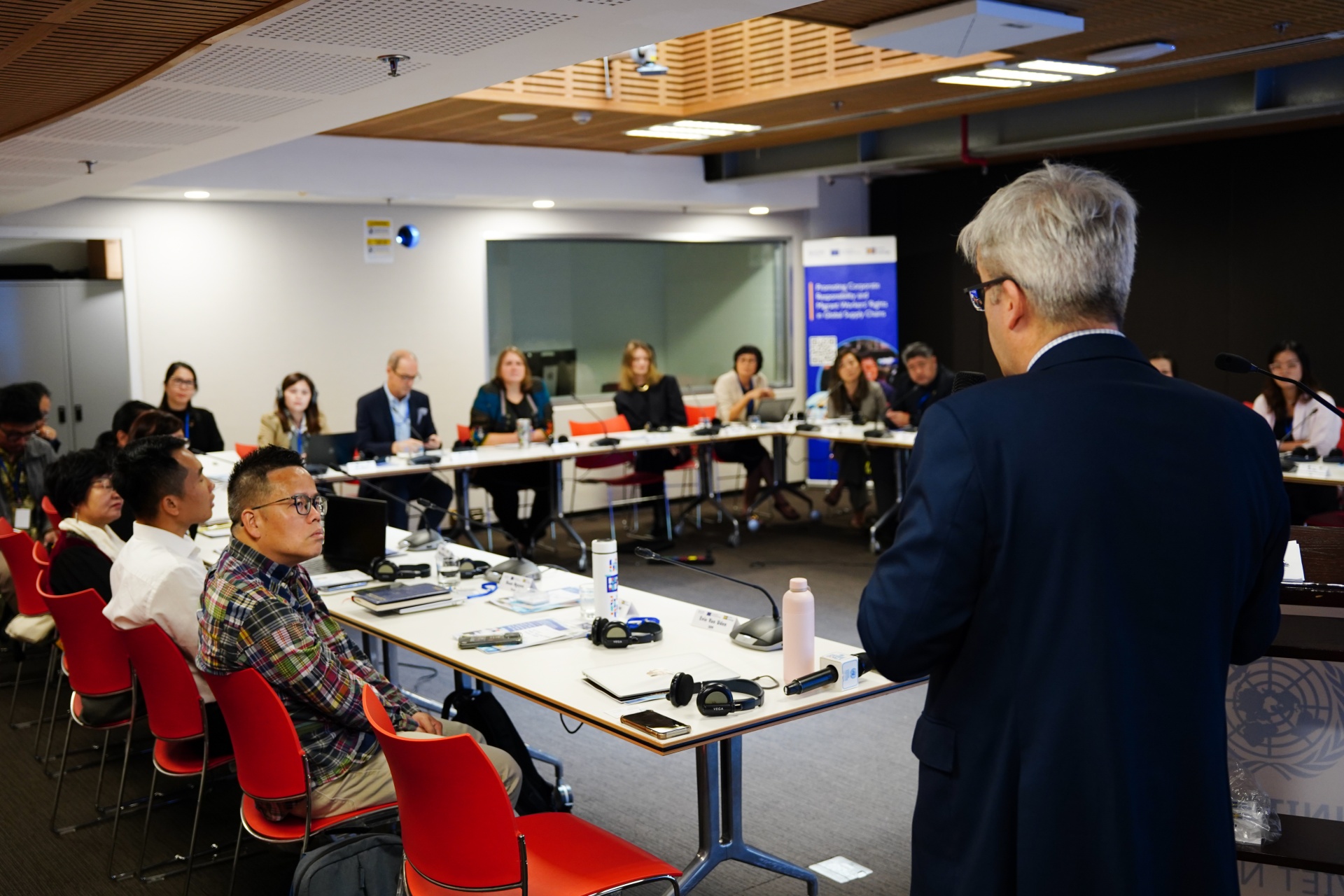Regulators flying blind over harms of toxic chemical cocktails in UK waterways – Royal Society

Report on Chemical Mixture Pollution in UK Aquatic Environments and Alignment with Sustainable Development Goals
Introduction: A Challenge to Sustainable Development
A report by the Royal Society has identified significant risks posed by unregulated mixtures of chemical pollutants in the United Kingdom’s aquatic environments. These chemical cocktails are found to be harmful to ecosystems even when individual components are at concentrations deemed safe. This situation presents a direct challenge to the achievement of several Sustainable Development Goals (SDGs), particularly those concerning environmental health and biodiversity.
- SDG 6 (Clean Water and Sanitation): The presence of these pollutants directly contravenes Target 6.3, which aims to improve water quality by reducing pollution and minimizing the release of hazardous chemicals.
- SDG 14 (Life Below Water): The harmful effects on aquatic ecosystems undermine Target 14.1, which seeks to prevent and significantly reduce marine pollution of all kinds.
- SDG 3 (Good Health and Well-being): Chemical pollution is cited as a persistent threat to human health, impacting Target 3.9 concerning the reduction of illnesses from hazardous chemicals and pollution.
Regulatory Deficiencies and Gaps in Monitoring
The existing regulatory framework, which focuses on individual chemicals in laboratory settings, is deemed unfit for purpose in addressing the cumulative impact of chemical mixtures in natural environments. This inadequacy hinders progress towards responsible chemical management as outlined in the SDGs.
Key Findings and Data Analysis
Analysis conducted by the UK Centre for Ecology and Hydrology reveals critical data points and significant knowledge gaps that impede effective environmental management and the fulfillment of SDG targets.
- Primary Pollutants: The highest mixture risk in UK waters currently originates from metal pollutants and polycyclic aromatic hydrocarbons (PAHs).
- Emerging Contaminants: The analysis did not include emerging pollutants such as PFAS, pharmaceuticals, and plasticisers. These substances are known to disrupt biological functions in aquatic species, directly impacting biodiversity and the goals of SDG 14 (Life Below Water) and SDG 15 (Life on Land).
- Monitoring Imbalance: An estimated 85% of available data is from river monitoring. There is a comparative lack of data for estuary and marine settings, where pollutants can accumulate, creating a significant blind spot for achieving SDG 14.
- Scale of the Problem: With over 350,000 chemicals in global production, only a small fraction are routinely monitored, highlighting a major obstacle to achieving SDG 12 (Responsible Consumption and Production), specifically Target 12.4 on the environmentally sound management of chemicals.
Recommendations for a Sustainable Future
The report advocates for a series of measures to address the risks of chemical mixtures, aligning UK policy with international sustainability commitments.
- Adopt a Precautionary Approach: The UK should implement a pragmatic, precautionary strategy to limit the release of chemical contaminants, thereby advancing SDG 6 and SDG 14.
- Embrace Innovation for Monitoring: To support robust regulation and achieve SDG 9 (Industry, Innovation, and Infrastructure), the UK should lead in embedding emerging science and technology, such as environmental DNA (eDNA) and machine learning, for more accurate and cost-effective monitoring.
- Build Human Capacity: There is a critical need to increase the training of environmental toxicologists to fill expertise gaps, a step that supports the development of strong institutions required to meet environmental SDGs.
Expert Commentary on the Urgency for Action
Professor Michael Depledge of the University of Exeter emphasized the cumulative harm of chemical mixtures, stating, “Our report presents ample evidence to suggest the harms are cumulative – and sometimes greater than the sum of individual chemical toxicities.” He noted that with chemical production set to triple by 2050, regulators require new skills and resources immediately to protect ecosystems and public health, reinforcing the urgency to act on SDG 3, SDG 6, and SDG 14.
Professor Louise Heathwaite of Lancaster University highlighted the opportunity for leadership, stating, “The UK now has a real opportunity to lead the way in implementing an innovative, pragmatic and precautionary approach to managing chemical mixture risk.” This proactive stance is essential for making meaningful progress on the global Sustainable Development Goals.
1. Which SDGs are addressed or connected to the issues highlighted in the article?
Detailed Explanation
The article on chemical pollution in UK aquatic environments connects to several Sustainable Development Goals (SDGs) due to the interconnected nature of environmental health, human well-being, and technological advancement.
- SDG 6: Clean Water and Sanitation: This is the most central SDG. The article’s entire focus is on the pollution of “UK rivers, lakes and coastal environments” by “cocktails of chemical pollutants,” directly addressing the goal of ensuring clean water and sanitation for all.
- SDG 14: Life Below Water: The article explicitly mentions the harmful effects on “aquatic ecosystems” and the lack of monitoring in “estuary and marine settings where pollutants may build up.” This directly relates to the goal of conserving and sustainably using the oceans, seas, and marine resources.
- SDG 12: Responsible Consumption and Production: The article highlights the source of the problem, noting that “more than 350,000 chemicals in production globally” and calls for a new approach to manage the “release of chemical contaminants into the environment,” which aligns with the goal of ensuring sustainable consumption and production patterns, particularly the sound management of chemicals.
- SDG 3: Good Health and Well-being: The connection is made explicit when the article states that chemical pollution is a “persistent threat to human health” and that chemicals can “harm humans and wildlife.” This addresses the goal of ensuring healthy lives and promoting well-being.
- SDG 15: Life on Land: While focusing on aquatic life, the article addresses inland water bodies like “rivers, lakes” which are part of terrestrial ecosystems. Furthermore, it states that “Chemical pollution is a key contributor to biodiversity loss globally,” a core concern of SDG 15.
- SDG 9: Industry, Innovation, and Infrastructure: The article calls for the UK to take a “leading role in embedding emerging science and technology to support monitoring and regulation, including the use of environmental DNA and machine learning.” This directly links to the goal of fostering innovation and upgrading technological capabilities for sustainable development.
2. What specific targets under those SDGs can be identified based on the article’s content?
Detailed Explanation
Based on the issues discussed, several specific SDG targets can be identified as directly relevant:
-
Target 6.3: By 2030, improve water quality by reducing pollution, eliminating dumping and minimizing release of hazardous chemicals and materials…
- The article’s core recommendation is to limit the “release of chemical contaminants into the environment” and tackle the “unregulated and understudied cocktails of chemical pollutants” to improve the quality of UK water bodies.
-
Target 14.1: By 2025, prevent and significantly reduce marine pollution of all kinds, in particular from land-based activities…
- The article identifies pollution sources such as “run off, direct industrial, and waste water discharges” (land-based activities) that affect “estuary and marine settings,” directly aligning with this target.
-
Target 12.4: By 2020, achieve the environmentally sound management of chemicals and all wastes throughout their life cycle…and significantly reduce their release to air, water and soil in order to minimize their adverse impacts on human health and the environment.
- The article critiques the current regulatory approach as “not fit for purpose” and calls for a new framework to manage the “350,000 chemicals in production globally” to prevent harm to the environment and human health.
-
Target 3.9: By 2030, substantially reduce the number of deaths and illnesses from hazardous chemicals and air, water and soil pollution and contamination.
- The article’s warning that “Chemical pollution is a persistent threat to human health” and its call to protect “the people… who use” these waters directly supports the aim of this target.
-
Target 15.5: Take urgent and significant action to reduce the degradation of natural habitats, halt the loss of biodiversity…
- The article directly links the issue to this target by stating, “Chemical pollution is a key contributor to biodiversity loss globally.”
-
Target 9.5: Enhance scientific research, upgrade the technological capabilities of industrial sectors in all countries…encouraging innovation…
- The report’s call to use “emerging science and technology… including the use of environmental DNA and machine learning, to make monitoring more accurate and cost effective” is a clear echo of this target’s objective.
3. Are there any indicators mentioned or implied in the article that can be used to measure progress towards the identified targets?
Detailed Explanation
The article does not cite official SDG indicators, but it implies the need for several metrics to measure progress, which can function as practical indicators:
-
Implied Indicator for Target 6.3: Concentration of chemical pollutants in water bodies.
- The article discusses how “concentrations of other emerging contaminants are increasing” and mentions specific pollutants like “metal pollutants,” “PAHs,” “PFAS, pharmaceuticals and plasticisers.” Measuring these concentrations would be a direct way to track progress on water quality.
-
Implied Indicator for Target 14.1: Level of pollution monitoring in coastal and marine environments.
- The article points out a data gap, stating there is “comparatively little reporting on estuary and marine settings.” An indicator could therefore be the proportion of these environments under routine monitoring, which would measure the capacity to address the problem.
-
Implied Indicator for Target 12.4: Proportion of chemicals in production that are routinely monitored and regulated.
- The article highlights that “With more than 350,000 chemicals in production globally, only a fraction are routinely monitored.” Tracking the increase in this fraction would be a clear indicator of progress in the sound management of chemicals.
-
Implied Indicator for Target 15.5: Rate of biodiversity loss in aquatic ecosystems linked to pollution.
- While difficult to measure, the article’s assertion that chemical pollution is a “key contributor to biodiversity loss” implies that tracking biodiversity metrics in affected rivers and lakes is a necessary indicator of environmental health.
-
Implied Indicator for Target 9.5: Adoption of new technologies for environmental monitoring.
- The specific mention of the need to adopt “environmental DNA and machine learning” suggests that the uptake and implementation of these advanced monitoring techniques could serve as an indicator of innovation in the sector.
4. Table of SDGs, Targets, and Indicators
| SDGs | Targets | Indicators (Implied from the article) |
|---|---|---|
| SDG 6: Clean Water and Sanitation | 6.3: Improve water quality by reducing pollution and minimizing the release of hazardous chemicals. | Concentration of chemical pollutants (metals, PAHs, PFAS, etc.) in water bodies. |
| SDG 14: Life Below Water | 14.1: Prevent and significantly reduce marine pollution from land-based activities. | Level of pollution monitoring and data reporting in coastal and marine environments. |
| SDG 12: Responsible Consumption and Production | 12.4: Achieve the environmentally sound management of chemicals to minimize their adverse impacts. | Proportion of chemicals in production that are routinely monitored and regulated. |
| SDG 3: Good Health and Well-being | 3.9: Substantially reduce illnesses from hazardous chemicals and water pollution. | Level of human exposure to hazardous chemical mixtures in water. |
| SDG 15: Life on Land | 15.5: Take urgent action to halt the loss of biodiversity. | Rate of biodiversity loss in inland freshwater ecosystems linked to chemical pollution. |
| SDG 9: Industry, Innovation, and Infrastructure | 9.5: Enhance scientific research and upgrade technological capabilities. | Adoption rate of new technologies (e.g., environmental DNA, machine learning) for environmental monitoring. |
Source: royalsociety.org
What is Your Reaction?
 Like
0
Like
0
 Dislike
0
Dislike
0
 Love
0
Love
0
 Funny
0
Funny
0
 Angry
0
Angry
0
 Sad
0
Sad
0
 Wow
0
Wow
0
















































:focal(1500,1000)/https://media.globalcitizen.org/a6/9a/a69a4720-d8a1-4715-b596-18738d03c05c/rotary_polio_hero_image.jpg?#)







/countries/sri-lanka/photo-credit---dmc-sri-lanka.tmb-1200v.jpg?sfvrsn=dc298bcc_1#)


















